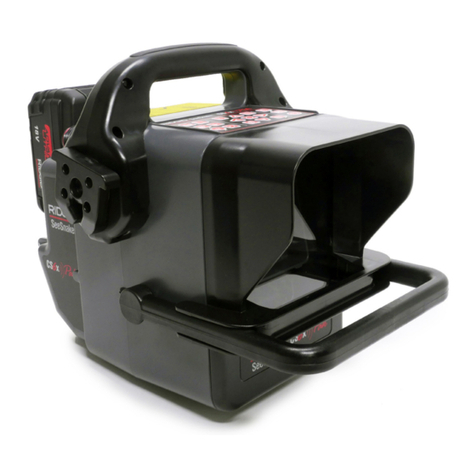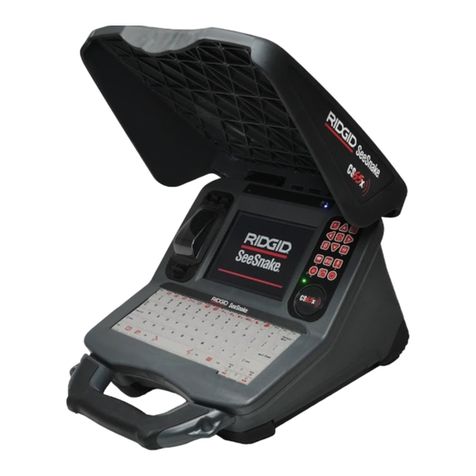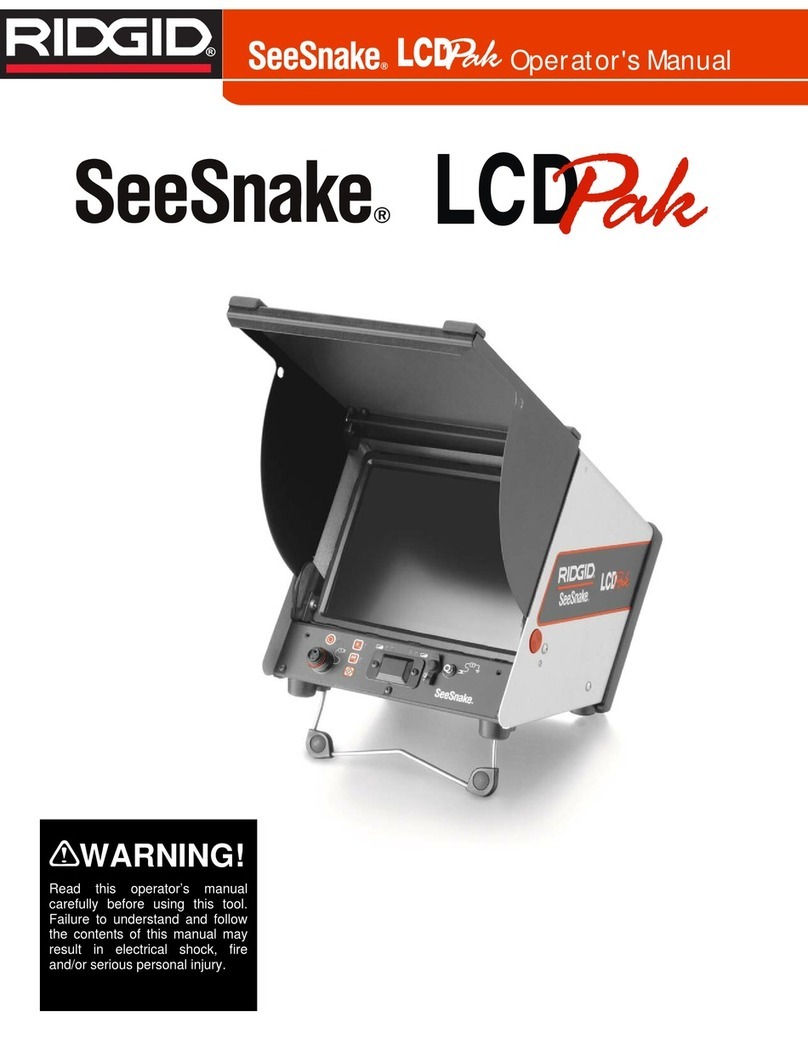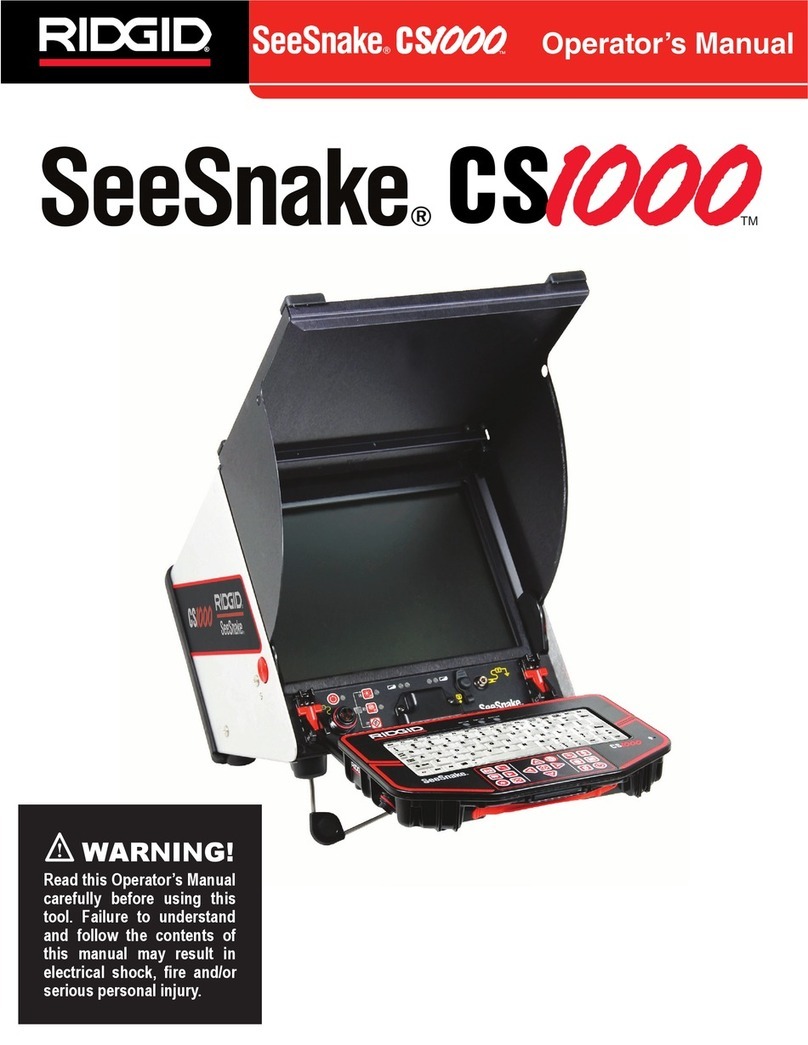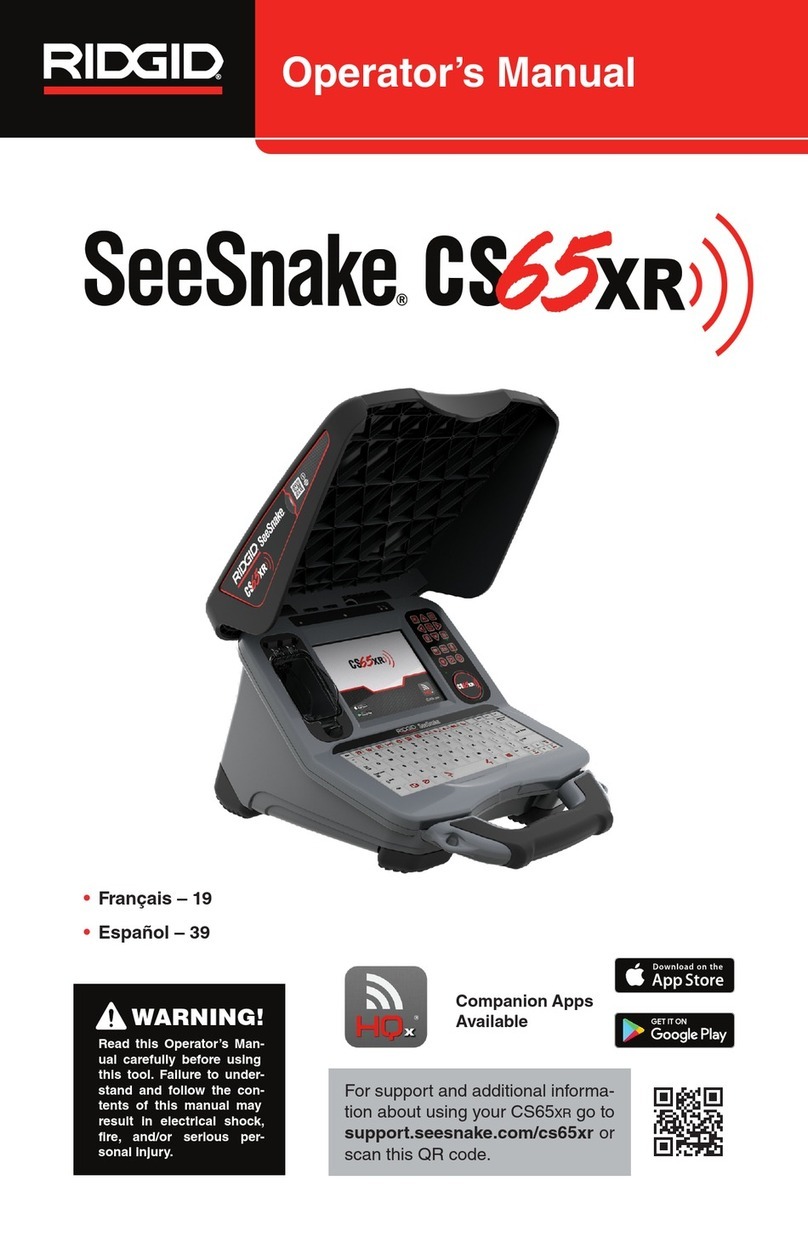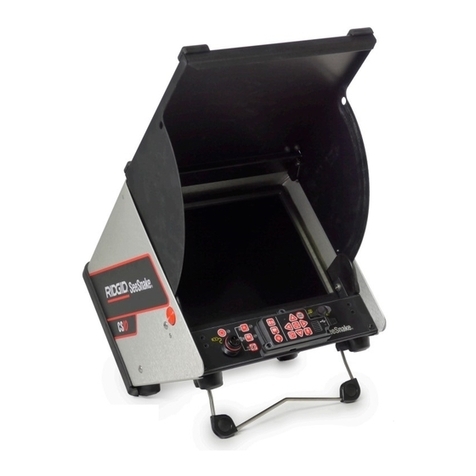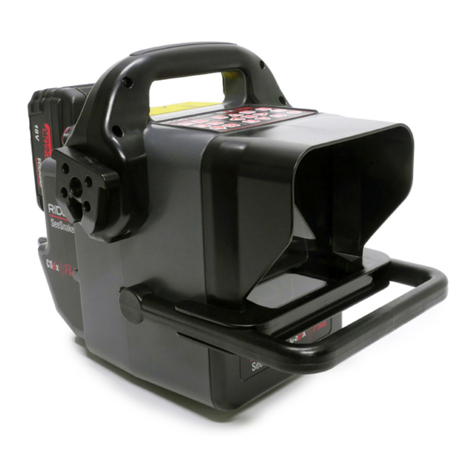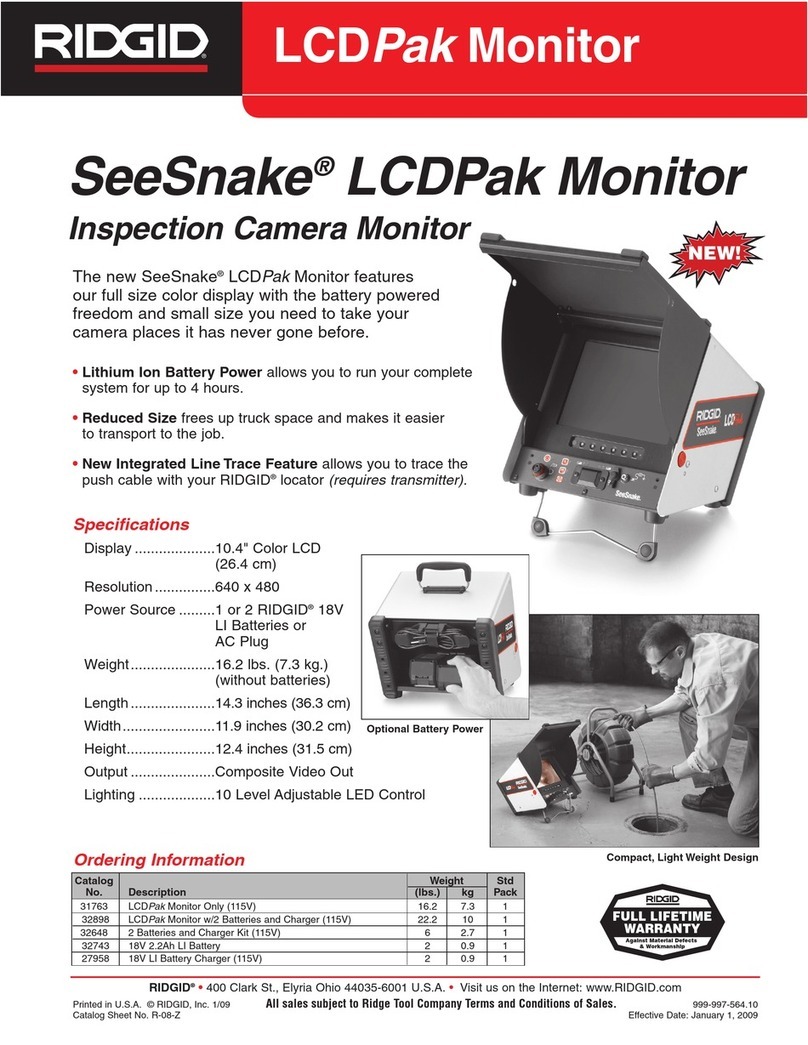
Ridge Tool Company 3
Personal Safety
• Stay alert, watch what you are doing and use
common sense when operating equipment� Do
not use equipment while you are tired or under
the inuence of drugs, alcohol or medication. A
moment of inattention while operating equipment
may result in serious personal injury�
• Use personal protective equipment. Always
wear eye protection� Protective equipment such
as dust mask, non-skid safety shoes, hard hat or
hearing protection used appropriately will reduce
personal injuries�
• Do not overreach. Keep proper footing and
balance at all times� This enables better control
of the equipment in unexpected situations�
• Dress properly� Do not wear loose clothing or
jewelry. Keep your hair, clothing and gloves
away from moving parts. Loose clothes, jewelry
or long hair can be caught in moving parts�
Equipment Use and Care
• Do not force equipment� Use the correct
equipment for your application� The correct
equipment will do the job better and safer at the
rate for which it is designed�
• Do not use equipment if the power switch
does not turn it ON and OFF� Any equipment
that cannot be controlled with the power switch is
dangerous and must be repaired�
• Disconnect the plug from the power source
and/or the battery pack from the equipment
before making any adjustments, changing
accessories or storing� Such preventive safety
measures reduce the risk of injury�
• Store idle equipment out of the reach of
children and do not allow persons unfamiliar
with the equipment or these instructions to
operate the equipment� Equipment can be
dangerous in the hands of untrained users�
• Maintain equipment� Check for misalignment or
binding of moving parts, missing parts, breakage
of parts and any other condition that may affect
the equipment’s operation� If damaged, have the
equipment repaired before use� Many accidents
are caused by poorly maintained equipment�
• Use the equipment and accessories in
accordance with these instructions, taking
into account the working conditions and the
work to be performed� Use of the equipment for
operations different from those intended could
result in a hazardous situation�
• Use only accessories that are recommended
by the manufacturer for your equipment�
Accessories that may be suitable for one piece
of equipment may become hazardous when used
with other equipment�
• Keep handles dry, clean, and free from oil
and grease� This allows for better control of the
equipment�
Battery Use and Care
• Recharge only with the charger specied by
the manufacturer� A charger that is suitable for
onetypeofbatterypackmaycreateariskofre
when used with another battery pack�
• Use equipment only with specically
designated battery packs� Use of any other
batterypacksmaycreateariskofinjuryandre.
• Do not probe battery with conductive objects.
Shorting of battery terminals may cause
sparks, burns or electrical shock� When battery
pack is not in use, keep it away from other
metal objects, like paper clips, coins, keys,
nails, screws or other small metal objects that
can make a connection from one terminal to
another� Shorting the battery terminals together
maycauseburnsorare.
• Under abusive conditions, liquid may be
ejected from the battery; avoid contact. If
contact accidentally occurs, ush with water. If
liquid contacts eyes, additionally seek medical
help� Liquid ejected from the battery may cause
irritation or burns�
• Use and store batteries and chargers in dry,
appropriate temperature areas� Extreme
temperatures and moisture can damage batteries
and result in leakage, electrical shock, re or
burns� See charger manual for more information�
• Do not cover charger while in use. Proper
ventilation is required for correct operation�
Coveringchargerinusecouldresultinre.
• Properly dispose of batteries� Exposure to high
temperatures can cause the batteries to explode,
so do not dispose of in a re. Some countries
have regulations concerning battery disposal�
Please follow all applicable regulations�
